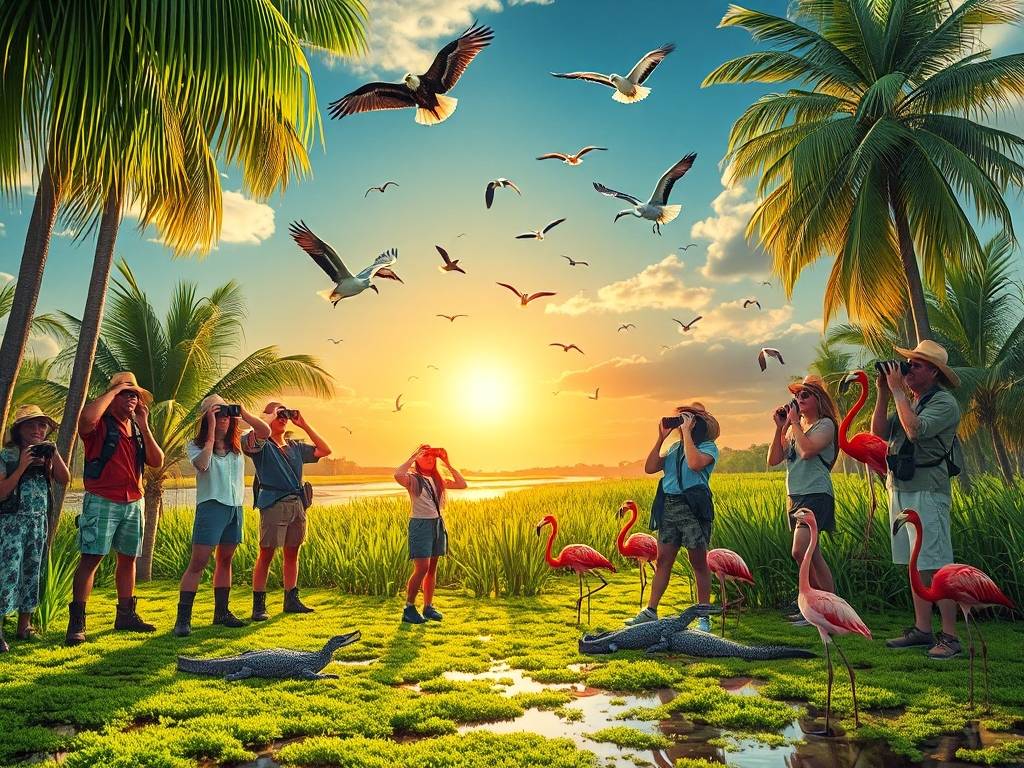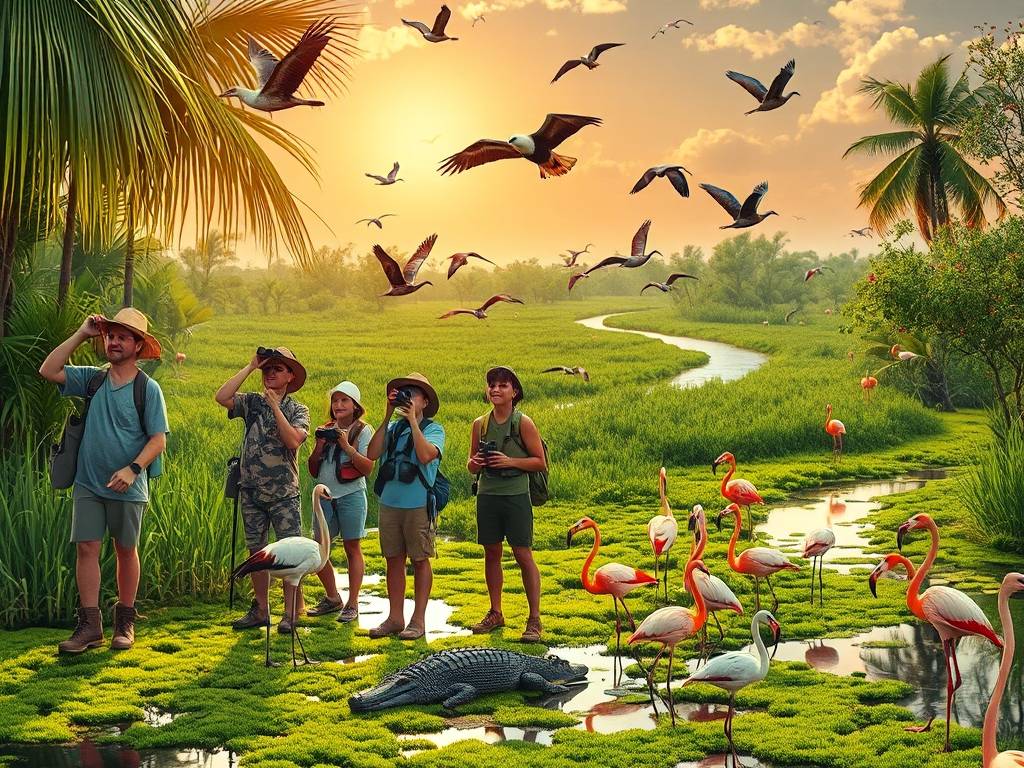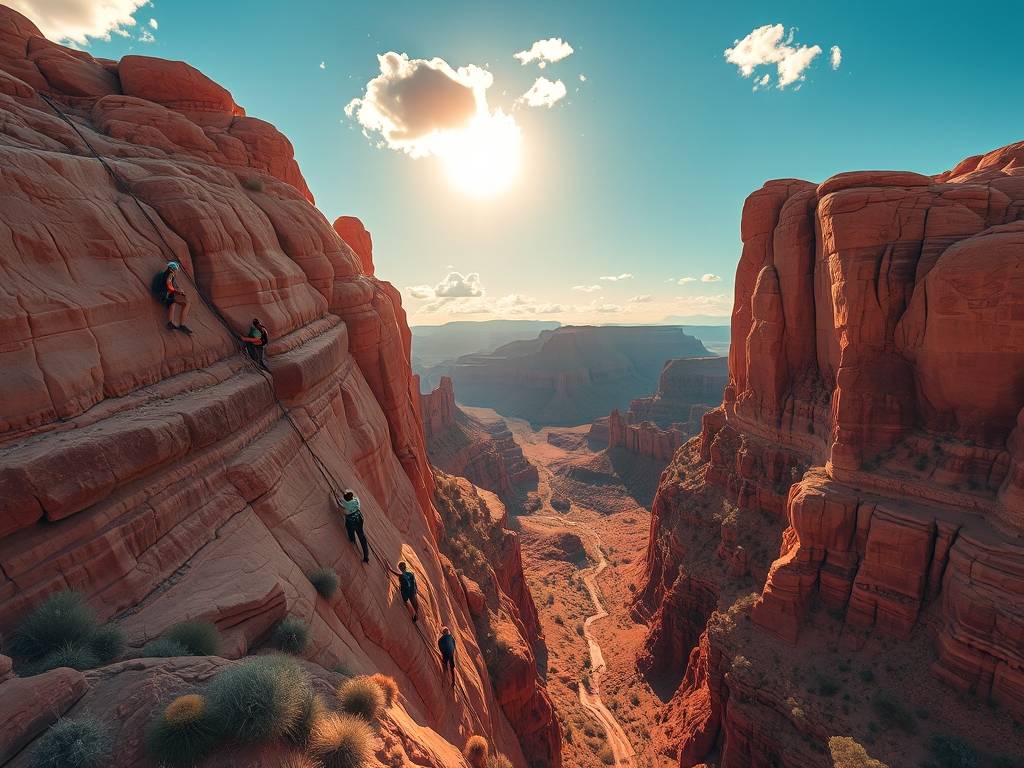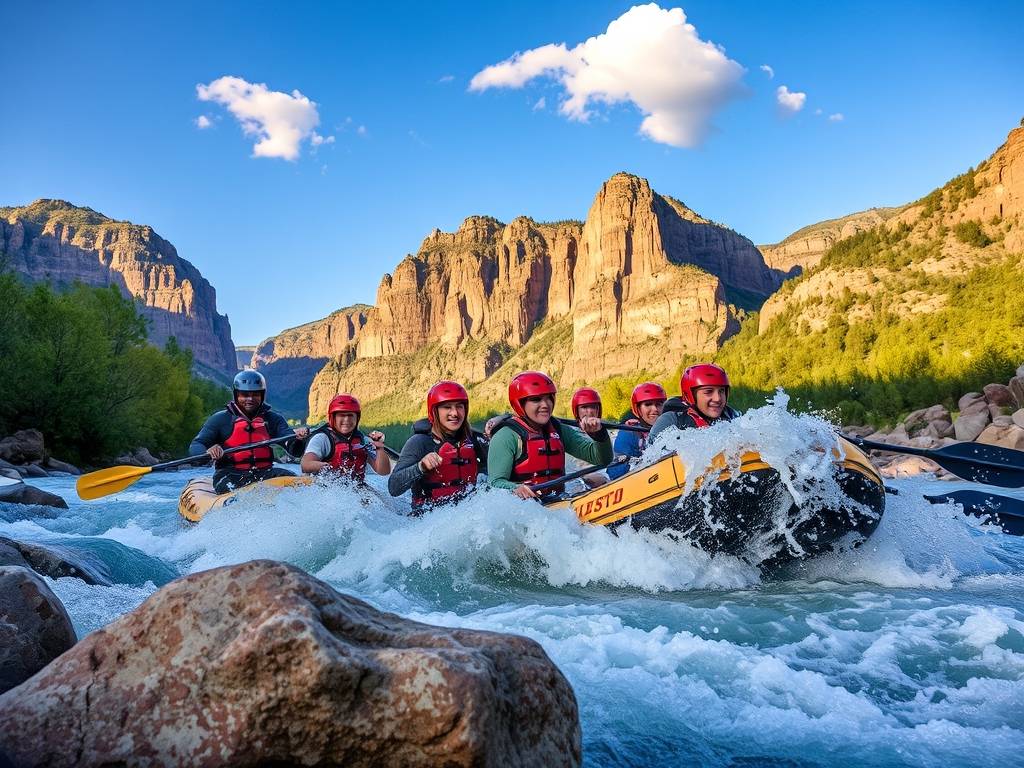USA Travel
US Travel: Bird-Watching in Florida’s Everglades
A Birder's Paradise: Discovering the Feathered Wonders of Florida's Everglades
There's a particular magic that descends with the morning mist over the sawgrass prairies. The air, thick and warm, carries a symphony of sounds—a distant splash, the whisper of wind through cypress knees, and then, the call. It might be the prehistoric croak of a Great Blue Heron or the high-pitched cry of a Red-shouldered Hawk. This is the Everglades, a vast, slow-moving river of grass that blankets the southern tip of Florida, and for bird-watchers, it is nothing short of a pilgrimage site.
Often called the "Birding Capital of the United States," the Everglades National Park and its surrounding ecosystems offer an unparalleled avian spectacle. Whether you're a seasoned birder with a life list tucked in your pocket or a curious traveler seeking a deeper connection with nature, this unique landscape promises encounters that will stay with you forever. The key to unlocking its secrets lies not just in knowing where to look, but in understanding the rhythm of this fragile, watery world.

Why the Everglades is a Birder's Dream
The fundamental reason for this abundance is habitat diversity. The Everglades isn't a single, monolithic swamp. It's a mosaic of interconnected ecosystems, each hosting a distinct community of birds. From the vast, open sawgrass marshes and mangrove-lined coastlines to the dense cypress swamps and slightly elevated pine rocklands, the variety is staggering. This diversity translates directly into a spectacular bird population, with over 360 species documented, ranging from full-time residents to migratory visitors that travel thousands of miles.
This brings us to the single most important factor for planning your trip: the seasons. The Everglades has two primary seasons, dry and wet, and they transform the birding experience completely.
The dry season (November through March) is the peak time for bird watching in Florida. As the vast sheets of summer water recede, fish and invertebrates become concentrated in remaining ponds and sloughs. This creates an all-you-can-eat buffet for wading birds. It's during these months that you'll witness the famous gatherings of herons, egrets, wood storks, and roseate spoonbills, all feeding spectacularly in concentrated areas. The weather is also milder, with lower humidity and fewer mosquitoes, making it the most comfortable time for hiking and trail walking. This is the best time for seeing wading birds in the Everglades in massive, photogenic concentrations.
Conversely, the wet season (April through October) offers a different, yet equally fascinating, experience. Summer rains replenish the "River of Grass," spreading water and life across the landscape. While wading birds disperse and become harder to spot in large groups, this is the time for nesting and for spotting a different cast of characters. You'll have a much better chance of seeing secretive wetland birds like the elusive Black-crowned Night-Heron or hearing the distinctive calls of breeding songbirds. This season is also prime time for observing the majestic Snail Kite, a highly specialized bird of prey that depends almost entirely on the apple snail, a key indicator species for the health of the Everglades. The wet season is a testament to the cycle of life here, and for those willing to brave the heat and thunderstorms, the rewards are unique.
Your Everglades Birding Toolkit: Must-Visit Locations and Tips
Knowing where to go is half the battle. While you can enjoy birds from the main park road, the true magic lies in exploring specific trails and waterways.
-
Shark Valley: This is the quintessential dry season birding spot. A 15-mile loop road takes you deep into the heart of the sawgrass marsh. You can walk, bike, or take a tram tour. The observation tower at the halfway point provides a breathtaking 360-degree view of the Glades, perfect for spotting flocks of birds in the distance. Here, you're almost guaranteed sightings of Anhingas drying their wings, alligators basking on the banks, and vast numbers of Great Egrets and White Ibises. It’s a fantastic location for beginner birding tours in the Everglades due to its accessibility and high concentration of wildlife.
-
Anhinga Trail: Starting from the Royal Palm Visitor Center, this is arguably the most popular and accessible trail in the park. It's a paved, wheelchair-accessible loop that winds through a sawgrass marsh and Taylor Slough. The Anhinga Trail bird sightings are legendary. You can often get within feet of Anhingas, Double-crested Cormorants, Purple Gallinules, and a variety of herons without needing binoculars. It’s the perfect spot for intimate, close-up photography and observation.
-
Eco Pond & Mahogany Hammock: Near the Flamingo Visitor Center at the southern tip of the park, Eco Pond is a small body of water that acts as a magnet for birds, especially at dawn and dusk. It's a reliable place for spotting roseate spoonbill sightings in Florida, along with flocks of shorebirds and ducks. Nearby, the Mahogany Hammock trail offers a shaded walk through a dense hardwood forest, a chance to look for Barred Owls, warblers, and the Pileated Woodpecker.
-
The Tamiami Trail (US 41) & Big Cypress National Preserve: Don't just focus on the national park. The road that borders the northern edge of the Everglades, the Tamiami Trail, is lined with phenomenal birding opportunities. Pull-offs like the Big Cypress National Preserve boardwalks and Turner River Road offer access to cypress domes and wet prairies where you can find Snail Kites, Limpkins (whose wailing cries are a classic sound of the Florida night), and the strikingly beautiful White-tailed Kite.

Beyond location, a successful trip hinges on preparation. A good pair of binoculars for bird watching is non-negotiable. A spotting scope can be invaluable for viewing distant birds in the open marshes. A field guide, whether a book or a trusted app like Merlin Bird ID, will help you identify and learn about the species you encounter. Remember to pack plenty of water, sunscreen, a hat, and insect repellent—the mosquitoes are a force to be reckoned with, especially in the summer. Patience and silence are your greatest allies; the more still and quiet you are, the more wildlife will reveal itself to you.
Beyond the List: The Deeper Story of the Everglades
Birding in the Everglades is more than just a hobby; it's a lesson in ecology. Every bird you see is a thread in a complex web of life. The Wood Stork, for instance, is a "indicator species." Its successful breeding is entirely dependent on the precise drying down of the wetlands, which forces fish into dense pools where the storks can feed their young. When the water levels are wrong, the storks don't nest. Seeing a Wood Stork, therefore, isn't just a check on a list; it's a sign of the current health of the system.
This brings us to the crucial context of Everglades restoration projects. For decades, this unique ecosystem was diked, drained, and diverted to make way for agriculture and development. The consequences were severe: water flow was disrupted, and bird populations plummeted. The story today, however, is one of hope. Massive, ongoing restoration efforts are working to "re-plumb" the Everglades, to send the right amount of clean water to the right places at the right time. When you visit, you are witnessing a landscape in recovery. Your presence as a responsible visitor supports the conservation of this irreplaceable place. By practicing ethical bird photography in national parks—keeping a respectful distance from nests and rookeries, not using playback calls to attract birds—you become a part of its protection.
So, as you stand on that boardwalk, listening to the chorus of the Glades, take a moment. Watch the methodical pacing of a Great Blue Heron. Marvel at the improbable pink of a roseate spoonbill, a color derived from the shrimp it eats. Seek out the slender, ghostly form of a Reddish Egret dancing in the shallows to shade the water and catch its prey. This is more than bird-watching; it is an immersion into a wild, resilient, and breathtakingly beautiful American landscape. The Everglades doesn't just show you its birds; it tells you their story, and in doing so, it invites you to become a part of its future.
相关文章
- US Travel: Hiking the Appalachian Trail in Vermont
- US Travel: White-Water Rafting in Colorado’s Arkansas River
- US Travel: Rock Climbing in Utah’s Moab Desert
- US Travel: Camping in California’s Yosemite National Park
- US Travel: Stand-Up Paddleboarding in Hawaii’s Oahu Coast
- US Travel: Fishing in Alaska’s Kenai River
- US Travel: Biking the Pacific Coast Highway in Oregon
- US Travel: Horseback Riding in Montana’s Yellowstone Vicinity
- US Travel: Stargazing in New Mexico’s White Sands National Park
- US Travel: Waterfall Chasing in North Carolina’s Blue Ridge Mountains
发表评论
评论列表
- 这篇文章还没有收到评论,赶紧来抢沙发吧~


